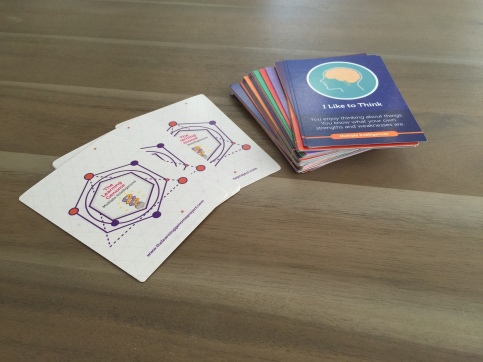Without fail, every kindergarten student at Anastasis has answered this question the exact same way, “If you could change one thing about yourself, what would you change?”
Answer: “Nothing.”
Nothing.
Without fail!
In fact as we build our Learner Profile, when we reach this question, our youngest tend to tilt their heads to the side in confusion. It’s that same look that a puppy gives you when they are trying to work out what you are saying. They are totally puzzled as to why we would ask them such an absurd question.
What would they change?
Nothing.
Young students believe that who they are is exactly who they should be.
They carry no embarrassment or shame about it. They are proud of who they are. They like who they are.
We’ve found that students who started their schooling at Anastasis (in other words, they’ve never attended any other school) still answer this way regardless of how old they are. Change? Why would I change?
They answer, “Nothing.”
They answer, “I like myself!”
When students enter Anastasis later in their schooling, they answer differently. Somewhere around 8 years old the answer changes. They want to be taller. They want to change their “color.” They want to be better at reading. Better at math. They want to be faster. Different from the way that they currently are. You begin to hear the heartbreak of comparison that they carry.
As schools, if we did nothing else right, helping students see the value in who they are is a win. To believe that who they are is okay, and beautiful, and right.
How do we keep that?
How do we make our schools and classrooms a place where students can be proud of who they are? How do we create a culture that cultivates this sense of rightness from within?
This sense of identity impacts every other part of what we do as educators.
Without this, all of our talk about making school a ‘safe place’ is superficial. We start in the wrong place. We don’t often get to the root of what makes a place safe. When students don’t feel secure in who they are, there really isn’t any place that feels safe. Students are living in the insecurity of comparison, of wishing they were something different, of wishing that their reality was different. They feel judged by others because they judge themselves harshly.
When students are secure with themselves, they can be vulnerable. They can be silly and take risks in front of others. This is a universal truth. When students feels comfortable doing their own thing, they aren’t worried that they look different, or act different, or like different things. They can be secure in who they are and with who others are. They can take risks knowing that if they do fail, it doesn’t define them.
They can do the scary things.
How do we help students maintain the sense of self and identity? At Anastasis, it all starts with knowing the individual, with honoring the humanity. At the beginning of each year, we spend our first two days of school getting to know every individual at Anastasis. Each student signs up for an hour long one-on-one meeting with their teacher. During this meeting, we ask a lot of questions (one of them being “If you could change one thing about yourself, what would it be?”), we identify strengths, interests, and passions. Then we play three card ‘games’ with students. These help us to identify learning style preferences, multiple intelligence strengths and brain dominance. We build a learner profile to help us understand who our students are. We follow these two days with ‘detox week,’ identity day, and a “Who we are” inquiry block. Throughout detox week, identity day, and the “Who we are” inquiry block we are helping students appreciate who they are. We celebrate it. As students value themselves as individuals, we work to build community by helping students see the value that others have in their uniqueness.

This process of building a Learner Profile was initially tech based as the beginning portion of the Learning Genome Project. After starting Anastasis, I began to realize that this process of building the profile should never be tech based. By making this process a one-on-one between teacher and student, we’ve begun by building relationship. By making it a card game that students interact with, we’re able to build a richer profile. As students interact with the cards and the teacher, they begin to tell stories and we get incredible nuance that would be impossible to capture with technology alone. This interaction of teacher and student is the first building block of community, of getting to know each other, of relationship, and vulnerability. It is from this place that we begin each year.
*If you are interested in building a profile the way that we do at Anastasis, you can now purchase the Learning Genome Project Learner Profile card sets. They’ll help you identify a student’s learning style preferences, multiple intelligence strengths, and brain dominance. It is from this profile that we are able to truly individualize the learning at Anastasis.
If we get nothing else right, let’s make this our priority: valuing the individual. The student-with-a-name. To maintain the rightness within, the beauty that makes us individuals.
Reblogged this on Agog.
Good to read you again! It sounds as though you continue to evolve and bring that evolution to the young ones. Always good stuff!
Thank you Lisa! Yes, great things happening 🙂